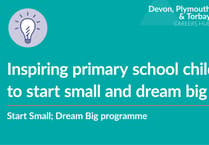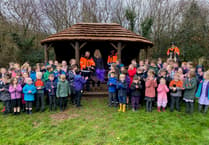STUDENTS at Callington Community College took part in a fishy art workshop last week, Friday (March, 4).
Students were exploring the print method known as ’Gyotaku’, with visiting artist Vicky Wiltshire and learning officer Hayley Buscombe, an artistic technique which has been used by Japanese fishermen since the mid 1800s.
Images were created by painting squid ink onto the fish and printing directly onto rice paper, giving an accurate record of the size, shape and types of fish.
This ancient method of data collection is still used by fishermen today, to log the items in their catch.
The prints are hung to dry on the boats and then stitched together to form log books, which are used to track shoal movements and dish variations throughout the seasons.
The session started by looking at a selection of fresh local fish, including megrim, lemon sole, pollock, plaice, flat fish, dory, squid and octopuses.
Students examined the fish and discussed the different body and tail shapes as well as the colours and patterns on the skin – they then discussed how these differences relate to habitats and lifestyle. Students experimented with the squid ink and Indian inks to form different effects and patterns.
A spokesperson for Callington Community College said: ’Squid ink has a very mucus like texture but all students got stuck in and produced some amazing work, handling the fish like professionals. Prints will be adapted and used within coursework and examination ideas, showing new and definitely different ways of working.
Polystyrene sheets were provided so that the students could design and create an authentic red stamp using the same codes and conventions of the time. The students involved had a very informative day and thoroughly enjoyed doing a different kind of art.’




